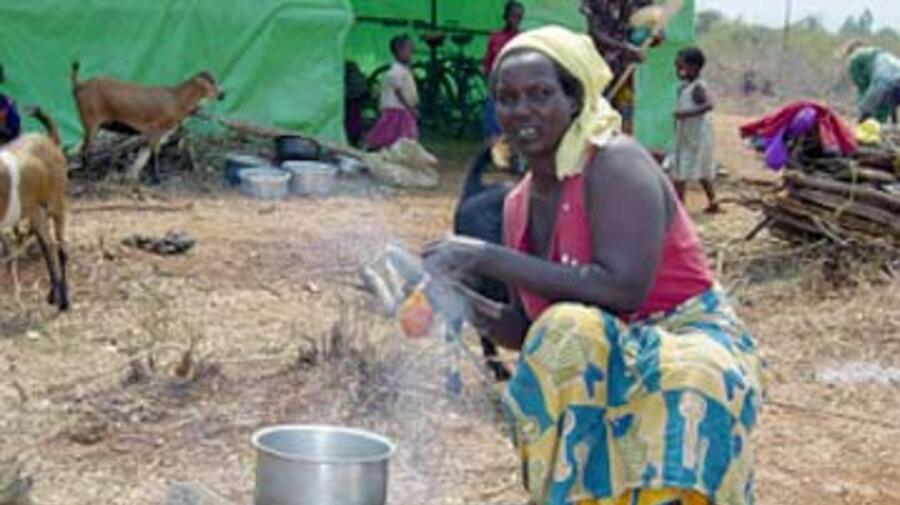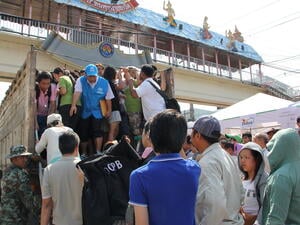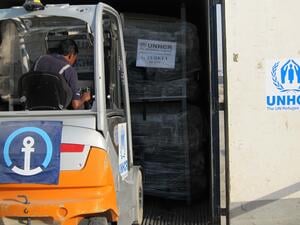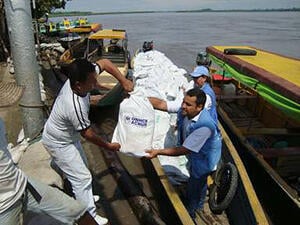Emergency aid arrives for Congolese refugees on Burundi border
Emergency aid arrives for Congolese refugees on Burundi border

Congolese refugees in western Burundi, near the border with the Democratic Republic of the Congo.
RUGOMBO, Burundi, June 25 (UNHCR) - Relief efforts are underway in western Burundi, where an estimated 34,000 Congolese refugees have congregated near the border after fleeing fighting in the Democratic Republic of the Congo.
Small numbers of Congolese refugees continue to arrive in Burundi, where they are living on three sites near the border - Rugombo, Cibitoke and Gatumba. A few dozen new arrivals were reported over the past two days, and some 250 were reported on Tuesday.
UNHCR started distributing relief items on Wednesday at Rugombo, where the bulk of the refugees are living. The distribution of blankets, mats, jerry cans, soap and hygiene materials will continue over the weekend before moving to the other two sites.
Refugees at Cibitoke received 15-day rations of food from the World Food Programme on Thursday. The food distribution should be completed at all three sites on Saturday.
Preventive measures have been taken in all sites to halt any spread of cholera after Médecins Sans Frontières confirmed a few cases and quarantined up to 30 people. UNHCR and its partners are also increasing the water storage capacity in all sites by constructing additional tanks and installing more bladders. One tank was finished on Thursday and the work is ongoing.
At the same time, the refugee agency is working with the International Committee of the Red Cross (ICRC) and the International Rescue Committee (IRC) to identify unaccompanied children among the new arrivals and begin tracing in an attempt to reunite them with family members.
Meanwhile, efforts continue to identify alternative sites where the refugees can be relocated away from the border. On Friday, UNHCR's site planning staff headed to eastern Burundi's Cankuzo and Rutana provinces, where the Burundian authorities have proposed three sites for potential camps for the new arrivals. The mission will evaluate the locations to see if they are suitable and look into the logistics of moving refugees from the border to the opposite side of the country.







